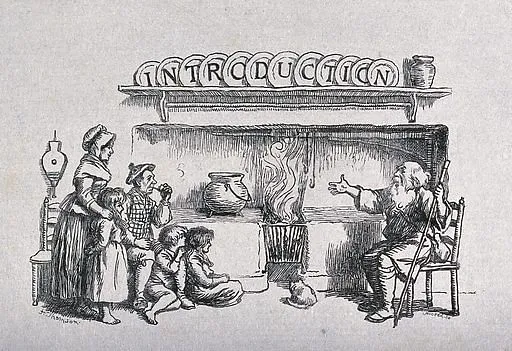While studying folk tales, Soviet folklorist and scholar Vladimir Propp classified a range of stock characters common in most stories.
He fragmented the stories into morphemes (analysable chunks) and identified 31 narratemes (narrative units) that comprised the structure of many of the stories.
These may be individualized by being given distinguishing character traits or attributes, but they are essentially functionaries enabling the story to unfold.
Vladimir identified certain archetypal story features—the Hero/Subject whose function is to seek; the Object that is sought; the Donor of the object; the Receiver, where it is sent; the Helper who aids the action; and the Villain who blocks the action.
The world’s best-known folk tale, Little Red Riding Hood, is an interesting example to grasp Vladimir’s findings. Little Hood (heroine) is sent by her mother (donor) with a basket of provisions (object) to her sick granny (receiver) who lives in the forest.
Little Hood encounters the wolf (villain) and is rescued from his clutches by the woodman (helper).
For that reason, in every story, there are fundamentally certain characters that play a central role, even as the nature of the story may vary, or its parallels may be discerned in different contexts and forms in the world around us.
Drawing analogy to the real-time story of Kashmir, many of Vladimir’s standard characters might varyingly symbolize many a feature of this place.
At the connotative level, there may possibly be many oblique meanings to decipher. So, conforming to Vladimir’s formula, present Kashmir can be seen as a classical place, depicting a medley of characters.
Dual role played by receiver cum villain who happens to be the politician. The hero here is a pseudo-hero who displays inconceivable traits. The object sought, right now, is that great key to authority called Power.
The helper in this story is the one who dies cheaply over and again, and the donor is Kashmir, which loses everything in the end.
Of course, while speaking of Kashmir, stories are framed. Stories get complex and unpredictable. Few stories get narrated, and many of them remain untold.
Similarly, the characters in these stories show intricacy and inconsistency like the murkier political scenario of Kashmir. In our story, the only character who gets benefitted is the villain, the one playing a dubious role of being a receiver as well.
They are not look-alikes; it is only one character that plays two roles hypocritically. The monstrous duality overrides this character. A perfect double-dealer. As and when the situation demands, this character tends to be a receiver and deceitfully becomes a villain for his lust for the object.
The object here is actually the power of the donor that is sadly being misused by the hero. In the story of Kashmir, the heroes who deliver the object are actually con men who remain unmoved by the repeated sacrifices of helpers.
They literally beg for the power that happens to be the object of the story and have a propensity to be the so-called sympathizers. The heroes of our story turn out to be sham protagonists as they trick the saga of those who endured endlessly and whose affliction gradually disappeared in oblivion. And those who are the helpers and true leading actors remain unsung.
It is through manipulation and pretense that our rogue heroes make the ‘mission’ of politicians successful. These very characters later, in a tick, come out as our villains once power corrupts them. They sell the donor for their stakes, for the lust of being in power. In all versions of stories, the donor has to pay.
There are least chances of being compensated. For what is donated is irrevocable, irremediable. It is the loss— acute and unalterable. More so, in a story where most of the characters are tricksters and pretenders, what the donor loses is vulnerable to being reduced to triviality.
The continuous distortion of popular discourse eventually renders it derisive. Interestingly, in the ever-changing storyline of Kashmir, most of Vladimir’s functionaries prove to be unstable characters.
They are unpredictable. Untrustworthy. Unreliable. They keep on changing their role and fidelity. They don’t stick to any theme or plot. Their dialogues transform as quickly as their setting and scenes shift.
Ours is a queer story, indeed! Unlike Little Red Riding Hood, we have many baskets to seek (rather grab), our receiver is not a sick granny but many scandalous creatures, and there are many villains in the shape of wolves roaming around.
Hero is disgustingly disfigured, the helper is extremely exhausted, and the donor is badly battered.
Perhaps, all rules of storytelling fail when our story begins to unfold. Layers after layers, the enigma is exposed.
The buoyant beginning of the story defeats the embarrassing endless end. And, it continues to haunt a place like Kashmir.
Seemingly, forever….Ajeeb Dastaan Hai Yeh, Kahan Shuru Kahan Khatem….
Disclaimer: The views and opinions expressed in this article are the personal opinions of the author.
The facts, analysis, assumptions and perspective appearing in the article do not reflect the views of GK







